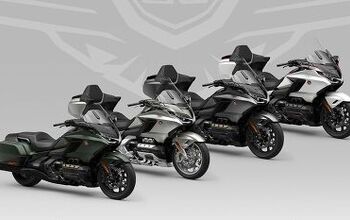T-Pro Body Armor: Lessening the Blow
(Editor's Note: I originally published this story in American Roadracing, September, 1993.) The task is simple: Armor-reinforced leathers, being your solitary means of defense during an accident, should be designed to maximize the amount of energy they absorb, thereby preventing injuries. But the solution is complex and deceiving. One would assume that using multi-density, foam-lined plastic shells would be a good solution: The shell would first disperse the shock over a greater area, which would then be absorbed by a large amount of padding to lessen or prevent injury.
But research has found otherwise. "After the British Safety Institute commissioned a controlled comparison of body armor," begins T-Pro America's founder Mike Braxton, "it was discovered that foam armor--even when used under a hard plastic shell--does not disperse energy very well. In fact, those two (when used alone) were the poorest types of protection--foam primarily because there is no outer load-spreading shell, and also because foam isn't resistant to puncture wounds. "The shortcoming of common hard-plastic/foam-backed shells is that they are rigid, and when pressed to the limits of a crash, they fail to perform because they do not dissipate energy very well. Instead, they transmit the shock to the opposite side of the impact, which is the body.
Generally, hard plastic will do the job, but when you do press it to the limit, you exceed the capability and you have a the very situation that you desired to avoid in the first place, which is direct transmission of the force of the impact directly to the body." The original T-Pro armor, comprised of a shell made of polyethylene (a temperature- and puncture-resistant plastic) covering multiple densities of foam, provided superior protection in said tests. Polyethylene proved adept at dispersing a load, which is part of its inherent nature, while the foam also acted to absorb and dissipate.
The action is comparable to that resulting from dropping a pebble in a pool--the ripples quickly and evenly spread across the surface. For those who doubt these results, the testing methods employed at Cambridge are easily duplicated at home. The basic procedure was a simple drop test: Raise a known weight to specified heights and drop it onto a piece of armor covering a pliable object, and measure the deformation into the object. "Simply cover a piece of clay with a piece of foam/plastic armor and smack it with a hammer," explains Braxton. "The shape of the hammer's head will be indented into a localized area of the clay, meaning that the armor neither dispersed nor absorbed the impact very well. But perform the same test with T-Pro armor, and the load zone will be spread out and not as deep." If you won't to that, then consider our experiences. We unintentionally impact-tested T-Pro body armor on two occasions, and were uninjured each time. An integrated chest/back protector and a set of System 90 body armor was used on both occasions.
Though T-Pro also sells a safety suit that can be worn under leathers, the armor we used (which covers knees, shins, thighs, hips, elbows, forearms and shoulders) was attached to the inside of our leathers with Velcro. Our shoulder pads meshed nicely with our chest/back protector, and we found that the armor can easily be trimmed to fine-tune the fit. "From the first Cambridge tests," continues Braxton, "we discovered that there were some really high-tech foams that disperse energy very well, so T-Pro incorporated those foams. After the British government declassified a compound composing a type of polymer rubber, T-Pro also incorporated that, with the finished result being the latest Red Line armor. And the latest test, again independently commissioned and performed by Cambridge University, showed this new armor to exceed the previous best test result--a record T-Pro held--by a factor of four. That's four times the protection! And remember that due to T-Pro's pliable nature, we are able to protect significantly more areas of the body."
That ample coverage contributes to the main drawback of T-Pro armor: On a hot day, the armor is terribly hot, especially under the chest/back protector--though our testing was performed without the recommended Cool-Tech undershirt.
Still, being hot is a small price to pay for maximum protection. And besides, body casts get pretty hot, too.
More by Brent Plummer



























Comments
Join the conversation